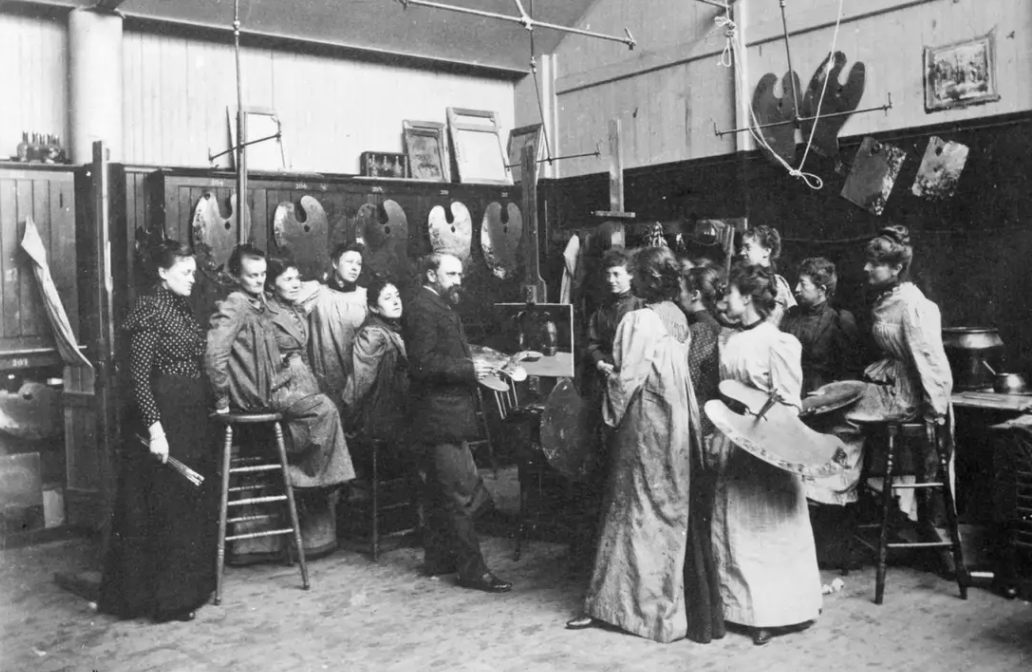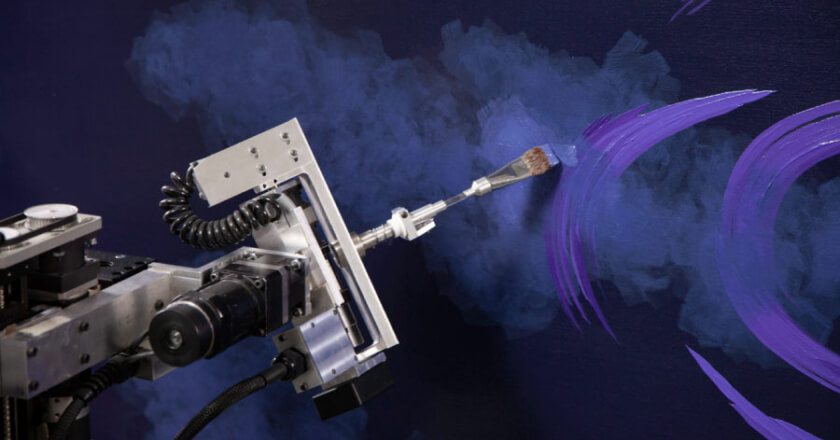Get Inspired
Build the life you love. Learn more about fusioneering:

Posted on September 26, 2022 in Art History
America – a country with no artistic merit or significance. At least, that’s how it used to be seen.
During the Renaissance, Florence, Italy, was the artistic capital of the Western World. The Académie des Beaux-Arts shifted that capital to Paris during the 19th Century. America, despite producing paintings and artistic groups of much merit – such as the Hudson River School – was viewed as culturally adolescent and lacking in refinement.
But a colossal upheaval was coming…
The First World War shakes the foundations of all society and redefines modernity. In the horrific chasm it cuts through humanity, a second global conflict becomes inevitable. As the Nazis grow in power, artists of all types – painters, writers, poets, filmmakers, musicians, and others, along with critics, collectors, and dealers – frantically struggle to flee the European continent. Caught-up in World War II, few that stay behind survive, while many others perish. Paris, the heart of European culture and art, is one of the cities hit hardest by the cruel realities of industrialized warfare.
The United States in the late 1930s and early 1940s, an ocean away and not yet involved in Hitler’s war, becomes the safe haven of those seeking refuge from fascist oppression. In the “new world” in New York City, like-minded artists, disillusioned by war and violence, come together to shape a new artistic movement: Abstract Expressionism.
Related: Discover Paul Kirby and Dulcinea’s Homage to Abstract Expressionism
Before and after the Second World War, peer groups of talented artists in New York became less concerned with visual representation and more concerned with emotional expression.The newly termed “Abstract Expressionist” art took various forms, but the central idea was the same: to capture movement and emotion without using recognizable imagery. The Abstract Expressionists saw the act of painting as much a part of the art as a finished canvas, and they sought to take viewers on a journey of creation and emotional reflection. Among these painters were Hans Hofmann, John D. Graham, Franz Kline, Jackson Pollock, Mark Rothko, Willem de Kooning, Barnett Newman, Robert Motherwell, and Clyfford Still. They challenged status quos, and together forged a path into art’s cutting edge. The world took note.
The Abstract Expressionists mingled with artists working in other forms of media, and together they came to a shared understanding of what kind of art they were trying to produce. Drawing inspiration from French Impressionism, Surrealism, Dada, and various abstract art movements, the group placed stock in the idea that art should come from the unconscious mind, and heavy emphasis was placed on spontaneous creation devoid of conscious reasoning. Painters, poets, musicians, dancers, and visual artists came together under the informal banner of “The New School.” The group’s central figure was a writer, poet, and art critic by the name of Frank O’Hara. Frank was curator for Manhattan’s Museum of Modern Art, and with the power of his station he was able to unite many minds across various artistic disciplines, and the New York School became a collective of individuals united in their desire to chase the avante-garde and create new modes of art and meaning. Embodying the American ideals of rugged individualism, freedom, and innovation – while also deconstructing modern society’s notions of static meaning and emotional repression – the New York School’s reinvention of art signaled the beginning of the American art explosion.
As Surrealism and French Impressionism sculpted the new art movements of The New York School, so too, did the New York School pave the way for all abstract and modern art moving forward.
Read More: What is Abstract Art?
Who will create the new avant-garde? Will it be you?
For more inspiration on breaking the mold and following your own path, follow the Kirby Foundation on Instagram and Facebook and join the mailing list to stay in-the-know about the confluence of art and science!
Are you interested in hearing the complete story of Paul and Dulcinea? Watch the video (nominated for Best Short Film at the 2021 Vail and Portland Film Festivals) for more info.
Want to be the first to know about every exciting new project at the Kirby Foundation?
Join Our Mailing ListBuild the life you love. Learn more about fusioneering:
Why pick which passion you should follow? Fusioneering allows you to cultivate many interests into something innovative and revolutionary.

Meet Paul and explore how blending your interests can empower you to follow your enthusiasm and bring your passions to life.